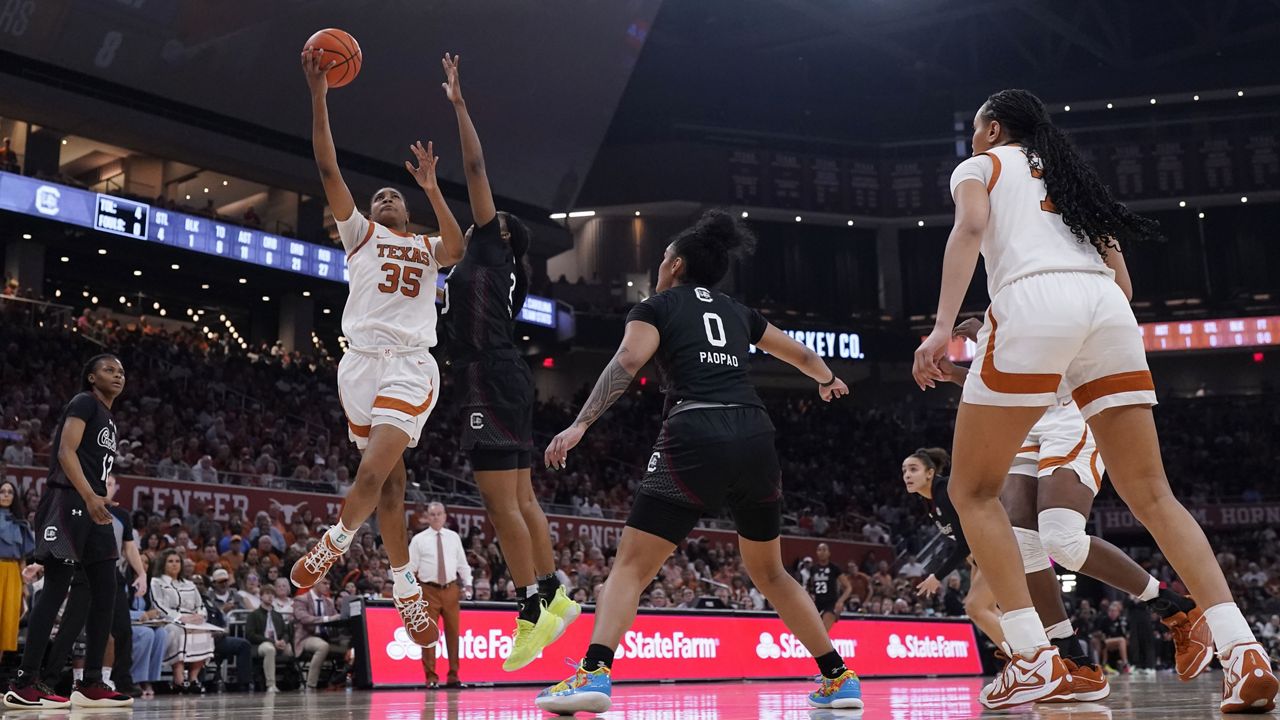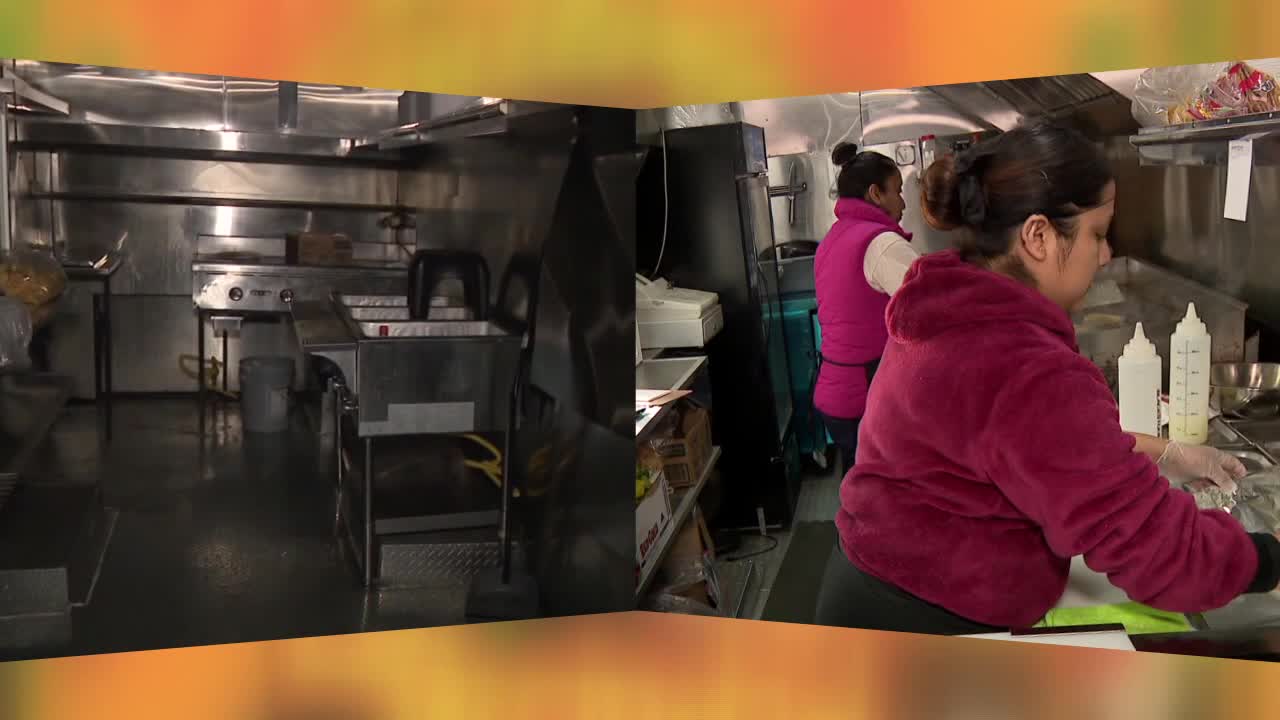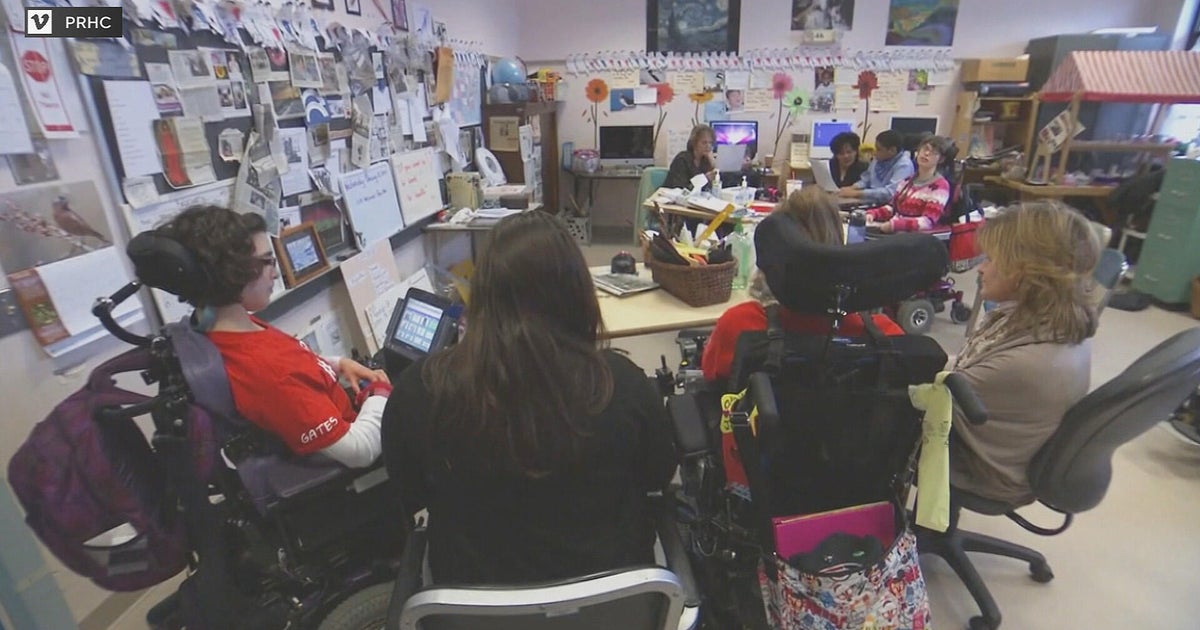Fitness
What makes walking so great for your health and what else you need to do
Members of the Get Healthy Walking Club walk the paths past the animal enclosures during the morning at the Louisville Zoo in Louisville, Ky.
AP
LOUISVILLE, Ky. — Janet Rapp strode briskly down a paved path through the city zoo, waving at friends and stopping briefly to greet emus she knows by name.
The 71-year-old retiree starts each morning this way with a walking club.
“I’m obsessed,” she said. Not only does it ease her joint pain, “it just gives me energy … And then it calms me, too.”
Medical experts agree that walking is an easy way to improve physical and mental health, bolster fitness and prevent disease. While it’s not the only sort of exercise people should do, it’s a great first step toward a healthy life.
“You don’t need equipment and you don’t need a gym membership,” said Dr. Sarah Eby, a sports medicine physician with Mass General Brigham. “And the benefits are so vast.”
What can walking do for you?
Walking can help meet the U.S. surgeon general’s recommendation that adults get at least 2½ hours of moderate-intensity physical activity every week. This helps lower the risk of heart disease, high blood pressure, dementia, depression and many types of cancer.
Janet Rapp, a member of the Get Healthy Walking Club stands in front of the zebra enclosure during the early morning at the Louisville Zoo.
AP
Walking also improves blood sugar levels, is good for bone health and can help you lose weight and sleep better, added Julie Schmied, a nurse practitioner with Norton Healthcare, which runs the free Get Healthy Walking Club.
Another advantage? It’s a low-impact exercise that puts less pressure on joints as it strengthens your heart and lungs.
James Blankenship, 68, said joining the walking club at the Louisville Zoo last year helped him bounce back after a heart attack and triple bypass in 2022.
“My cardiologist says I’m doing great,” he said.
For all its benefits, however, walking “is not enough for overall health and well-being” because it doesn’t provide resistance training that builds muscle strength and endurance, said Anita Gust, who teaches exercise science at the University of Minnesota Crookston.
That’s especially important for women’s bone health as they age.
Experts recommend adding such activities at least twice weekly – using weights, gym equipment or your own body as resistance — and doing exercises that improve flexibility like yoga or stretching.
Do you really need 10,000 steps a day?
Nearly everyone has heard about this walking goal, which dates back to a 1960s marketing campaign in Japan. But experts stress that it’s just a guideline.
The average American walks about 3,000 to 4,000 steps a day and it’s fine to gradually work up to 10,000, Shmied said.
Setting a time goal can also be useful. Shmied suggests breaking the recommended 150 minutes per week into 30 minutes a day, or 10 minutes three times a day, for five days. During inclement weather, people can walk in malls or on treadmills.
As they become seasoned walkers, they can speed up the pace or challenge themselves with hills while still keeping the activity level moderate.
“If you can talk but not sing,” Eby said, “that’s what we consider moderate-intensity exercise.”
How do you stay motivated?
Walking with friends – including dogs – is one way.
Walking clubs have popped up across the nation. In 2022, New York personal trainer Brianna Joye Kohn, 31, started City Girls Who Walk with a TikTok post inviting others to walk with her.
“We had 250 girls show up,” she said.
From left, Lou Ann Parrino, Lisa Weisert, and Janie Reinert, members of the Get Healthy Walking Club pause during their morning walk to say good morning to one of the animals at the Louisville Zoo in Louisville, Ky.
AP
Since then, the group has walked every Sunday for around 40 minutes, with some meeting afterward for brunch or coffee.
The Louisville Zoo launched its walking club in 1987, partnered with Norton in 2004 to expand it, and now boasts more than 15,000 registered members. Every day from March 1 through Oct. 31, people walk around and around the 1.4-mile loop before the zoo officially opens.
Tony Weiter meets two of his siblings every Friday. On a recent morning, they caught up on each other’s lives as they zipped past zebras in a fenced field and a seal sunning itself.
“I enjoy the serenity of it. It’s cold but the sun is shining. You get to see the animals,” said Weiter, 63. “It’s a great way to start the morning.”

Fitness
The 9 best workout clothing brands for women in 2025
When you buy through our links, Business Insider may earn an affiliate commission. Learn more
It shouldn’t be hard, but finding workout clothes you actually love can be really tough. Whether you’re hitting the squat rack, heading out for a hike, or on your way to pilates in a cute workout set, your clothes should move with you, keep you cool and dry, and put you in the mood to work out.
I’ve been testing women’s fitness gear for over 10 years, doing everything from powerlifting to yoga to running to hiking. I’ve battled many, many pairs of leggings that fall down with every sun salutation or burpee, and tops that don’t actually wick a drop of moisture from your skin. So when I say these are some of the best workout clothing brands for women, I mean it.
Nike takes the top spot for its unbeatable range of fits, styles, and sizes, all in performance fabrics and at a great price point. If you’re on a budget, CRZ Yoga delivers surprisingly well-made, sweat-wicking pieces without the premium price tag. And if you’re headed outdoors, REI Co-op makes quality apparel for every element, all at an approachable price.
Below, we break down more of the best workout clothing brands we’ve tested, highlighting what makes each one worth adding to your activewear rotation.
A quick look at our favorite women’s activewear brands:
Best overall: Nike
Nike caters to pretty much every sport with various inclusive styles and sizes, making it our top pick for high-performance workout gear.
Best budget: CRZ Yoga
CRZ Yoga makes breathable, sweat-wicking, squat-proof workout gear, which you can score for about $30 per item.
Most stylish: Lululemon
Lululemon reigns supreme in balancing great performance fabrics and seriously flattering cuts, and offers a range of styles depending on your preferences.
Best for runners: Janji
This boutique performance brand designs top-tier running gear that’ll last you for miles and miles.
Best worth the splurge: Sweaty Betty
Sweaty Betty leverages luxe fabrics, durable stitching, and tailored fits to make high-end workout apparel that’s seriously high quality.
Best for yoga and pilates: Vuori
Vuori’s wide range of workout clothes are breathable, soft-on-skin, and move with the body, making them super cozy (and cute) during slower workouts.
Best for the outdoors: REI Co-Op
From hiking to camping, REI’s own brand has all the technical apparel you’ll need at a reasonable price.
Best plus-size: SuperFit Hero
SuperFit Hero uses soft fabrics and flat-lock seams for minimal chafing. You can find soft leggings and supportive sports bras up to a size 7XL.
Best sustainable: Girlfriend Collective
Girlfriend Collective’s workout clothing is thoughtfully designed with buttery-soft fabric for a wide range of sizes, and everything from its fabrics to its packaging is made largely with recycled materials.
Fitness
How to Measure Your Level of Everyday Fitness

Essential health and fitness standards depend on what you need to be capable of doing on a daily basis, but are you prepared for life’s emergencies? This question touches on that subject:
Stew, if you were a normal person just trying to be an asset in your everyday life (just living and emergencies), what fitness standards would you recommend? David
My answer stems from one of my definitions of tactical fitness:
Tactical fitness requires a person to be “good at everything” and not particularly great at any one thing. This means a person of any age should be able to engage in activities requiring strength, power, speed, agility, endurance, muscle stamina, flexibility, mobility and grip strength.
These abilities make you an asset (versus a liability) in practically any situation, meaning you can be helpful to others and save yourself in potentially dangerous situations, whether they are natural or man-made. You have a level of durability and a work capacity that allows you to do what needs to be done daily (chores, yard work, work/hobbies and life). You do not need to be world class in anything, but maintaining these elements of fitness will prolong your ability to stay an asset in your life.
The standards will vary with age and sex, and there is a wide range of capabilities below, but older men and women are still staying fit at above-average levels. Some people I know with higher-range scores on these activities are in their 80s! However, I would define remaining an asset as “above average” compared to society today.
Defining ‘Being an Asset’
Walk/Run (Endurance)
The endurance needed to walk an hour with no problem is a good minimum standard. Can you add weight to that walk? A backpack? A weight vest? If you can mix any jogging into that hour, that would be better. Can you run a mile without stopping? Can you run it faster than 8-10 minutes? As you progress through this range of abilities, the longer and faster (and more weight) you can move, the more of an asset you are. If you want a standard, walk with 25% of your body weight for one hour and run a mile without stopping. The younger you are, you can place a time and distance limit of 4 mph with walking and 7-8 minutes per mile running.
Muscle Stamina/Strength
Depending on your abilities, calisthenics may be considered a strength activity (one push-up, one pull-up, one dip). While your first repetition of calisthenics is a strength exercise, your 10th or 20th repetition involves muscle stamina. As an asset, you can do standard calisthenics for reps. However, if you can do one repetition, you have a level of strength that many lack. Where are you on this spectrum? Are calisthenics a strength or muscle stamina exercise? If it’s the latter, I would consider you an asset with your muscle stamina.
Strength/Load Bearing
As discussed above, strength and durability are required to carry a backpack and perform heavier calisthenics. However, are you strong? Can you lift heavy things? You can cultivate this ability in the gym or in the yard with wheelbarrows, bags of mulch, shovels of dirt or hay bales. Carrying groceries from the car to the house and walking the stairs without pause are lower-level capabilities, but many cannot.
How much weight can you lift off the floor, squat and chest-press? The greater percentage over your body weight places you in the asset category for strength. Can you carry someone out of a dangerous situation? This is the ultimate asset category. A firm grip is part of the strength function and can be tested by hanging on a pull-up bar or doing farmer’s walks with weight. Can you carry half of your body weight? One hundred percent of it during the farmer’s walk (two dumbbells)?
Flexibility/Mobility
Flexibility and mobility help you move quickly and without pain and stiffness. Can you bend over, touch your toes, get into the down dog pose, do a push-up and reverse the order to stand again? Or if you are in a chair or on the floor, are you stuck and struggle to stand without assistance? These are the basics of flexibility and mobility, but doing 10-20 different yoga poses or an hourlong yoga class places you on a higher level on the asset spectrum.
Speed and Agility
As we age, these qualities tend to be the first to go, even if you practice doing these activities. Playing a sport such as soccer, tennis or pickleball can help you maintain and improve speed and agility. Excessive speed can be practiced by jumping, running and stopping fast. Can you do an obstacle course? Can you do a shuttle run quickly? Maintaining these skills throughout life places you high on the asset spectrum, as not many people can move fast.
While these are loosely defined parameters of “an asset,” they demonstrate to most how little they are doing. By adding this variety of training to your week, you can have a moderately developed set of fitness skills that indeed make you an asset in typical situations.
Want to Learn More About Military Life?
Whether you’re thinking of joining the military, looking for fitness and basic training tips, or keeping up with military life and benefits, Military.com has you covered. Subscribe to Military.com to have military news, updates and resources delivered directly to your inbox.
Story Continues
Fitness
Home Fitness Equipment Market to Grow by USD 4.44 Billion from 2024-2028, Driven by Increased Demand, Report on How AI is Transforming the Market – Technavio

NEW YORK, Feb. 11, 2025 /PRNewswire/ — Report with the AI impact on market trends – The global home fitness equipment market size is estimated to grow by USD 4.44 billion from 2024-2028, according to Technavio. The market is estimated to grow at a CAGR of 11.38% during the forecast period. Increased demand for home fitness equipment is driving market growth, with a trend towards increasing smartphone penetration. However, rising popularity of other forms of workouts poses a challenge. Key market players include ANTA Sports Products Ltd., Core Health and Fitness LLC, Decathlon SA, Dyaco International Inc., HOIST Fitness Systems Inc., Icon Health and Fitness Inc., Impulse Qingdao Health Tech Co. Ltd., Johnson Health Tech Co. Ltd., Life Fitness, Nautilus Inc., Origin Fitness Ltd., Paradigm Health and Wellness Inc., Rama Enterprises, TECHNOGYM S.p.A, Torque Fitness, True Fitness Technology Inc., Tunturi New Fitness BV, Wattbike Ltd., WOODWAY Inc., and XMark Fitness.
AI-Powered Market Evolution Insights. Our comprehensive market report ready with the latest trends, growth opportunities, and strategic analysis- View Free Sample Report PDF
|
Forecast period |
2024-2028 |
|
Base Year |
2023 |
|
Historic Data |
2018 – 2022 |
|
Segment Covered |
Distribution Channel (Offline and Online), Type (Cardiovascular training equipment and Strength training equipment), and Geography (North America, Europe, APAC, South America, and Middle East and Africa) |
|
Region Covered |
North America, Europe, APAC, South America, and Middle East and Africa |
|
Key companies profiled |
ANTA Sports Products Ltd., Core Health and Fitness LLC, Decathlon SA, Dyaco International Inc., HOIST Fitness Systems Inc., Icon Health and Fitness Inc., Impulse Qingdao Health Tech Co. Ltd., Johnson Health Tech Co. Ltd., Life Fitness, Nautilus Inc., Origin Fitness Ltd., Paradigm Health and Wellness Inc., Rama Enterprises, TECHNOGYM S.p.A, Torque Fitness, True Fitness Technology Inc., Tunturi New Fitness BV, Wattbike Ltd., WOODWAY Inc., and XMark Fitness |
Key Market Trends Fueling Growth
The home fitness equipment market is witnessing in demand as consumers prioritize healthy habits and the health benefits of regular fitness activities. Home gym equipment like biking, jogging, and swimming machines are popular choices for those seeking cardiovascular workouts. Innovative fitness products, such as smart treadmills with heart rate and distance covered sensors, are in high demand. Compact, foldable forms of equipment, like DeerRun’s under-desk treadmill, offer mobility and convenience. Smart dumbbells with built-in sensors and smart electronic devices like Bowflex SmartTech’s 560 dumbbell are revolutionizing strength training. Obesity, heart disease, diabetes, and cancer are significant health issues driving the market. Fitness technology-related trends include online fitness sessions, diet plans, and sales channels, both online and offline. Brands like Fitness Superstore and Life Fitness cater to this growing demand with cardiovascular training and strength training equipment. Accessibility features and convenience are essential for consumers, making flexibility exercises and stretching equipment, like foam rollers and yoga mats, increasingly popular. Lifestyle preferences and health and wellness are key factors influencing the market. Salesman and after-sale services are crucial for customer satisfaction. Exercise instruments like resistance bands, kettlebells, and multipurpose home gyms offer flexibility and mobility solutions. The market is worldwide, with developing and under-developed countries showing significant growth.
-

 Politics1 week ago
Politics1 week agoTulsi Gabbard confirmation fate to be tested with key committee vote
-

 Technology1 week ago
Technology1 week agoTrump’s first 100 days: all the news affecting the tech industry
-

 News1 week ago
News1 week ago'Beyond betrayal.' Venezuelans in Florida are angry at Trump immigration policy
-

 World1 week ago
World1 week agoMontenegro pursues values-driven EU enlargement process
-

 World1 week ago
World1 week agoTrump says US will ‘own’ Gaza in redevelopment plan
-

 News1 week ago
News1 week agoCongressional Democrats to Trump: Changes can't be done in secrecy
-

 Politics1 week ago
Politics1 week agoCIA offering buyouts to its entire workforce: report
-

 Education1 week ago
Education1 week agoTrump’s Orders Could Drain Millions From Universities, but Few Protest Openly



)














